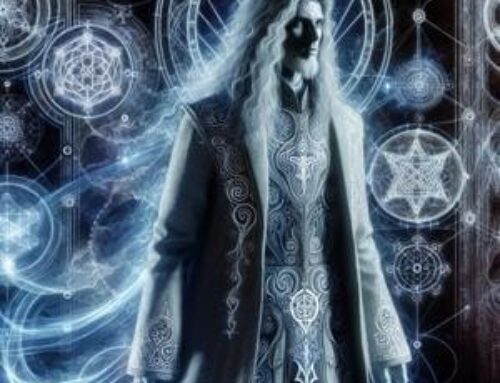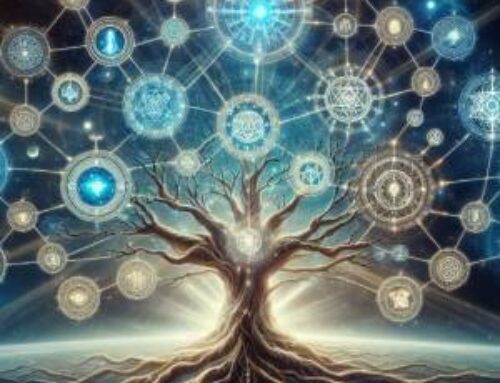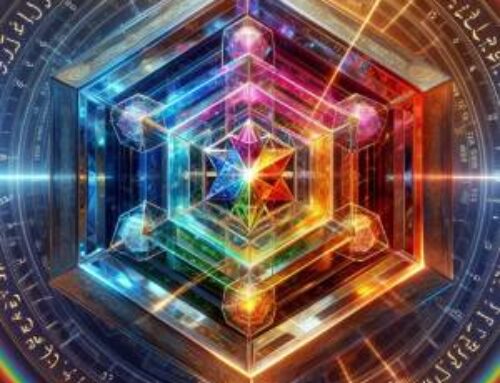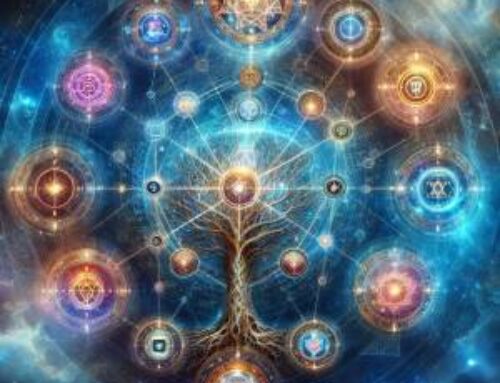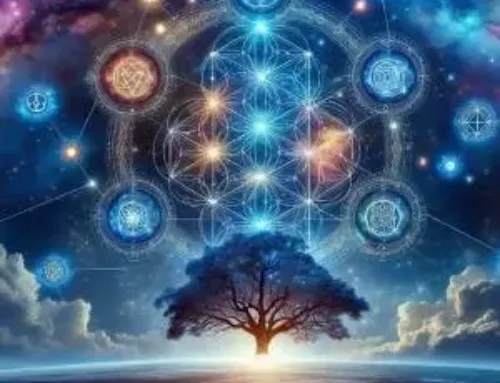Contents
- 1 Unveiling the Structure: The Tree of Life
- 2 The Interplay of Divine Energies
- 3 Practical Applications: Bridging the Divine and the Mundane
- 4 Conclusion: The Journey Towards Enlightenment
- 5 FAQ- Kabbalah Sefirot
- 5.1 1. What are the Sefirot in Kabbalah?
- 5.2 2. How are the Kabbalah Sefirot organized in the Tree of Life?
- 5.3 3. What is the significance of the three pillars in the Tree of Life?
- 5.4 4. Why is ethical living important in Kabbalah?
- 5.5 5. Where can I learn more about the Kabbalah Sefirot and their practical applications?
- 6 References
The Sefirot form the cornerstone of Kabbalah’s mystical teachings. They represent ten divine attributes or emanations through which the Infinite continuously creates both the physical world and the higher metaphysical realms. Each Sefirah (singular of Sefirot) symbolizes different facets of the divine, acting as a conduit between the finite and the infinite. Delving into the Sefirot unveils profound insights into the nature of the universe and our role within it. This examination of the Kabbalah Sefirot sheds light on their structure, function, and practical applications, highlighting their importance in spiritual practice and everyday life.
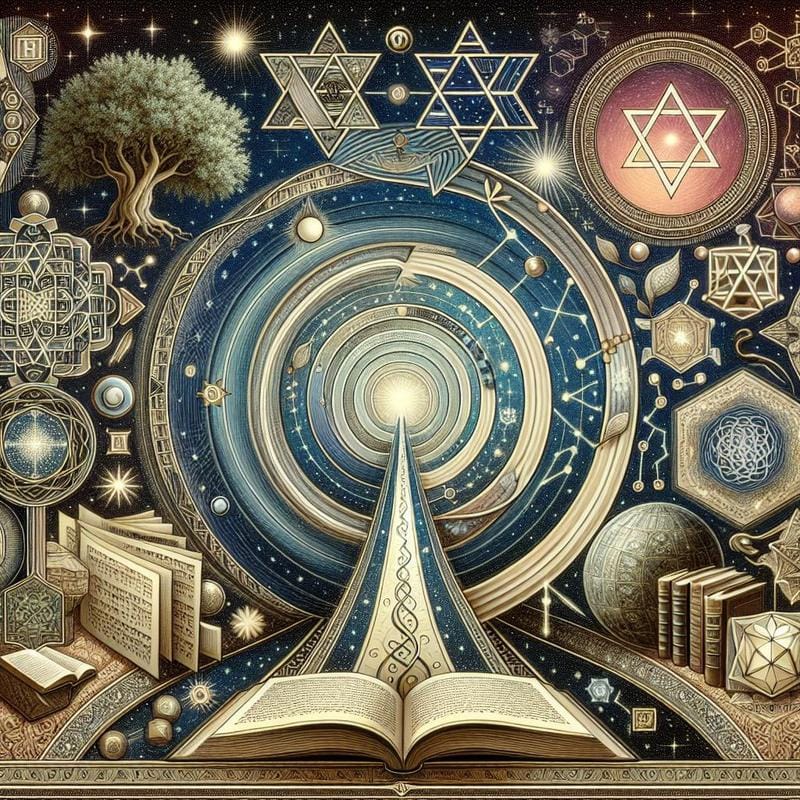
Unveiling the Structure: The Tree of Life
At the heart of Kabbalistic teachings lies the Tree of Life, a diagram that maps out the process of creation and the structure of existence (1). Comprising ten Sefirot interconnected by 22 paths, which correspond to the Hebrew alphabet, the Tree of Life illustrates the dynamic interplay of divine energies and consciousness. This sacred geometry not only represents the process of creation but also serves as a guide for spiritual ascent.
- Kether (Crown): The source of divine light and will, embodying pure potential and the inception of creation.
- Chokmah (Wisdom): The spark of creation, symbolizing intuitive insight and the masculine principle.
- Binah (Understanding): The feminine principle, representing the ability to comprehend and shape Chokmah’s inspiration.
- Chesed (Mercy): The force of love and kindness, fostering expansion and benevolence.
- Geburah (Severity): The principle of judgment and limitation, essential for discipline and constraint.
- Tiphareth (Beauty): The harmonizing force, balancing Chesed and Geburah, epitomizing beauty and compassion.
- Netzach (Victory): The drive for endurance and persistence, embodying emotions and passions.
- Hod (Splendor): The principle of intellect and communication, refining and executing plans.
- Yesod (Foundation): The channel through which divine energy flows into the material world, representing the subconscious and the bridge between the spiritual and physical.
- Malkuth (Kingdom): The physical world, where all divine energies culminate and manifest.
The Interplay of Divine Energies
Three Pillars and Triads
“The Sephiroth, or emanations, form the structure through which Kabbalists understand God’s manifestations and the universe.” (2)
The Kabbalah Sefirot are organized into three pillars and triads, highlighting the balance and flow of divine energies. The right pillar emphasizes expansion and giving (masculine), the left pillar focuses on restriction and receiving (feminine), and the central pillar seeks equilibrium. This structural arrangement underpins the harmonious creation and existence of all realms.
The triads further categorize the Kabbalah Sefirot into distinct groupings:
- The Divine Triad (Kether, Chokmah, Binah): Deals with the abstract and formless aspects of divinity, encompassing pure will, wisdom, and understanding.
- The Individual Triad (Chesed, Geburah, Tiphareth): Focuses on the moral and ethical dimensions of existence, balancing mercy with severity through beauty.
- The Personal Triad (Netzach, Hod, Yesod): Involves the practical implementation of divine principles in the material world, balancing endurance, intellect, and foundation.
Practical Applications: Bridging the Divine and the Mundane
Meditation, ethical living, and ritual practices centered around the Kabbalah Sefirot offer pathways for spiritual growth and daily enrichment.
Meditation and Contemplation
Focusing on each Sefirah during meditation can deepen spiritual awareness. Meditating on Chesed fosters love and compassion, while contemplation on Geburah can help cultivate discipline and strength. This practice aligns individuals with the divine qualities of the Sefirot, enhancing their spiritual and emotional well-being.
Ethical Living
Embodying the principles of the Kabbalah Sefirot in daily life promotes a balanced and harmonious existence. Striving to reflect attributes such as mercy, strength, and beauty leads to personal growth and a deeper connection with the divine.
Rituals and Prayers
Kabbalistic rituals often involve invoking the Sefirot to align oneself with divine energies. This may include reciting specific prayers, performing symbolic actions, and using sacred symbols associated with each Sefirah. These practices help integrate the divine qualities into everyday life, fostering spiritual and personal development.
The Transformative Power of the Sefirot
Engaging with the Kabbalah Sefirot brings numerous benefits, from enhanced spiritual awareness to emotional and mental balance. By aligning with these divine attributes, individuals can achieve greater inner peace, reduce stress, and promote overall well-being. The study and meditation on the Sefirot encourage personal growth, leading to improved relationships, greater self-awareness, and a deeper connection to the divine.
Spiritual journeying is a lifelong process that involves exploring one’s inner self and a larger cosmic consciousness, often leading to transformational experiences and assisting others in healing processes (3).
Conclusion: The Journey Towards Enlightenment
The Kabbalah Sefirot offer a profound and intricate system for understanding the divine and the universe. Through their symbolic language, structured teachings, and emphasis on ethical living, they provide a roadmap for spiritual growth and enlightenment. By integrating meditation, ethical principles, and ritual practices, seekers can connect with higher realms of consciousness and gain a deeper understanding of their place in the cosmos.
For those keen on delving deeper into these ancient teachings, the Hermetic Academy offers extensive resources and guidance on the path of Kabbalah.
FAQ- Kabbalah Sefirot
1. What are the Sefirot in Kabbalah?
A: The Sefirot are ten attributes or emanations through which the Infinite manifests and continuously creates both the physical realm and the higher metaphysical realms. They form the structure of the Tree of Life in Kabbalah.
2. How are the Kabbalah Sefirot organized in the Tree of Life?
A: The Kabbalah Sefirot are organized into a diagram known as the Tree of Life, consisting of ten spheres connected by 22 paths. These paths correspond to the Hebrew alphabet and illustrate the dynamic flow of divine energies and consciousness.
3. What is the significance of the three pillars in the Tree of Life?
A: The three pillars in the Tree of Life represent different aspects of divine energy: the right pillar (masculine, giving), the left pillar (feminine, receiving), and the central pillar (balance). These pillars illustrate the balance necessary for harmonious creation and existence.
4. Why is ethical living important in Kabbalah?
A: Ethical living is essential in Kabbalah as it reflects one’s spiritual state. By adhering to the qualities of the Sefirot, such as mercy, strength, and beauty, practitioners manifest divine attributes in their daily interactions, creating a harmonious and balanced life.
5. Where can I learn more about the Kabbalah Sefirot and their practical applications?
A: For those interested in exploring the Kabbalah Sefirot further, the Hermetic Academy offers comprehensive resources and guidance. The academy provides structured programs to help students understand and apply these mystical principles in their spiritual journey.
References
(1) Rubenstein, E. (2020). The Tree of Life: The Kabbalah of Immortality. Hermetic World, Paphos.
(2) Mathers, S. L. M. (1887). The Kabbalah Unveiled. London: George Redway.
(3) Keegan, L. (1991). Spiritual Journeying. Journal of Holistic Nursing, 9, 14 – 3. https://doi.org/10.1177/089801019100900103.

